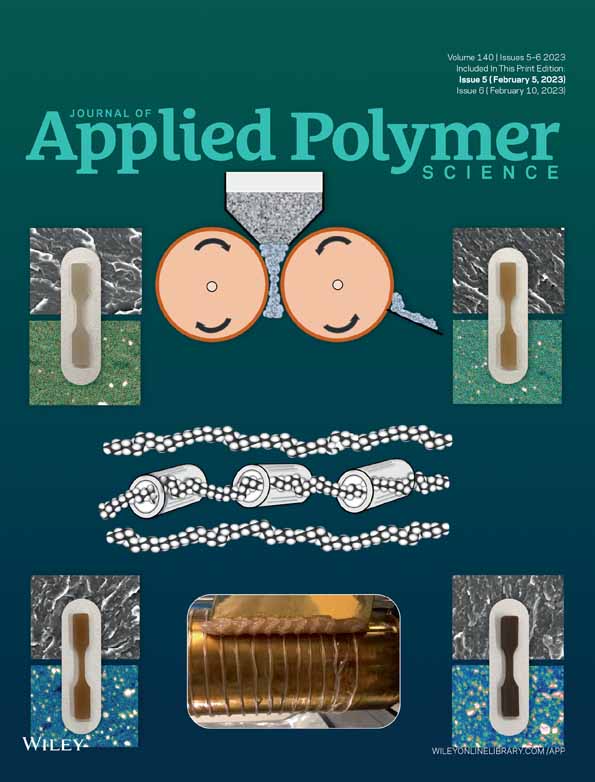The effect of inorganic particles on the breakdown strength and mechanical properties of EVA-based composites
Funding information: Conselho Nacional de Desenvolvimento Científico e Tecnológico – CNPq, Grant/Award Number: 305206/2020-6; Fundação de Amparo à Pesquisa do Estado do Rio de Janeiro – FAPERJ, Grant/Award Number: E-26/202.830/2017
Abstract
Ethylene-vinyl acetate (EVA) copolymer was melt-blended with different inorganic particles, such as alumina trihydrate (ATH), montmorillonite-based organoclay (CLO15A) and organophilic silica (R202) to produce (nano)composites with outstanding electrical breakdown strength. The composites loaded with different amount of particles were characterized by dielectric, rheological, morphological and mechanical properties. The addition of the particles resulted in an increase of electrical breakdown strength, whose results depend on the nature and amount of filler. The addition of 1%–5% of ATH resulted in an increase of 50% of this property. Similar results were observed for the composites loaded with 7% of CLO15A and R202. All composites displayed low values of dielectric constant and dielectric loss, which is interesting for insulator applications. The presence of the filler did not exert great influence on the rheological properties of the composites, thus keeping the good processability of EVA matrix. Finally, the composites containing the organoclay presented the best mechanical response.
Open Research
DATA AVAILABILITY STATEMENT
The raw/processed data required to reproduce these findings are available from the corresponding author on reasonable request.




